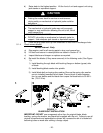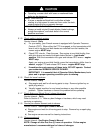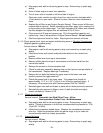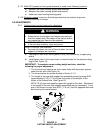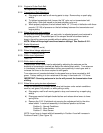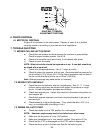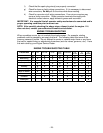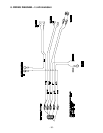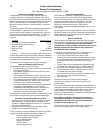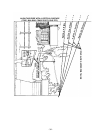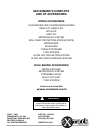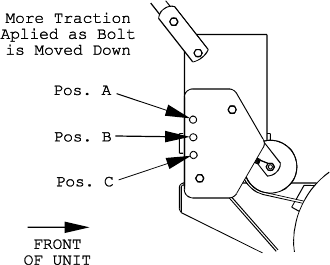
- 28 -
FIGURE 15
DRIVE BELT TENSION
ADJUSTMENT POSITIONS
6. WASTE DISPOSAL
6.1 MOTOR OIL DISPOSAL
Engine oil is a pollutant to the environment. Dispose of used oil at a certified
recycling center or according to your state and local regulations.
7. TROUBLE SHOOTING
7.1 MOWER PULLING LEFT OR RIGHT.
a) Check idler arm pulleys and drive sheaves for mud and/or grass buildup.
Check for proper scraper position. See 5.2.6.
b) Check to be sure idler arms pivot freely, if not lubricate idler pivots.
c) Check for worn drive belts.
NOTE: Wheel drive belts should be replaced as a set. A new belt should not
be mixed with a worn belt.
d) Check drive linkage adjustment - See 3.11 steps a) and b)
e) Check for proper tire pressure in drive tires. Recommended tire pressure for
the drive tires is 12 to 16 psi. (82-110 kPa) Higher pressures may be used in
the tire on the side that it pulls to (up to 28 psi. (193 kPa)).
Note: Different pressures may make mower cut unevenly.
7.2 MOWER CUTS UNEVENLY.
a) Check the drive tire pressure and tire circumference. See 5.1.11. A more
uniform cutting height may be obtained with higher tire pressure on rough
terrain. A lower tire pressure provides more flotation.
b) Check deck support pins. Hairpin clips must be in the same hole position on
each support pin.
c) Check deck support alignment and check mounting brackets to be sure all
bolts are tight.
d) Check blades tip to tip for straightness. (They should be within 3/16” (4.8
mm), or one blade width from being in line.)
7.3 ENGINE WILL NOT START.
a) Check that choke is in the “ON” position for a cold engine.
NOTE: Kawasaki engines may need to be choked even when warm.
b) Make sure the key switch is in the “ON” position
c) Make sure transmission is in “true neutral” position. (See section 3.10c).
d) Check that the PTO is disengaged and the PTO switch is depressed.
e) Check that there is fuel in the tank and that the fuel valve is open.



